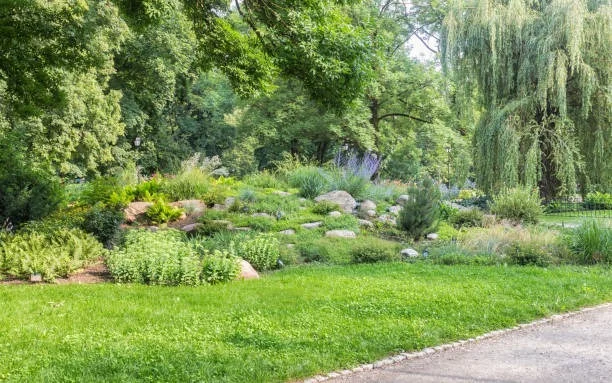Why Native Landscaping Matters
Native landscaping uses plants that naturally grow in your area. These plants evolved in the local climate, soil, and weather patterns. They know how to survive without heavy watering or chemicals. They also support the local ecosystem.
When you use native plants, you help protect biodiversity. Research from the Royal Horticultural Society shows native plant gardens can support up to 60% more local wildlife compared to gardens filled with non-native plants. This means more birds, bees, and butterflies in your backyard.
Lower Water Use, Lower Stress
Native plants need less water because they are adapted to your climate. In dry areas, they can survive on rainfall alone. In wet regions, they handle seasonal flooding better than imported plants.
The Environmental Protection Agency estimates that nearly 30% of a household’s water use goes toward landscaping. Switching to native plants can cut that number in half. That’s less stress on local water supplies and lower bills for homeowners.
One landscaper at RockFence Capital shared that they’ve seen lawns replaced with native grasses cut irrigation needs by 80%. “It’s like watching your yard go on autopilot,” they said. “You still get beauty, but you’re not dragging a hose around all summer.”
Chemical-Free Maintenance
Most non-native plants need fertilizer, pesticides, or herbicides to thrive. Native plants don’t. They’ve adapted to local pests, soil nutrients, and rainfall patterns.
This reduces chemical runoff into rivers and streams. The U.S. Geological Survey found pesticides in nearly every stream tested in urban areas. That pollution impacts fish, amphibians, and even drinking water sources. By using native plants, you avoid adding to that problem.
More Wildlife, Better Ecosystem Health
Native plants provide food and shelter for local species. Many pollinators rely on specific plants for survival. Remove those plants, and you remove the insects and animals that depend on them.
For example, monarch butterflies need milkweed to lay eggs and feed caterpillars. Plant milkweed, and you create a lifeline for the species.
Birds benefit too. Native shrubs and trees produce berries and seeds at the right time of year for migration and nesting. That natural rhythm keeps the local food chain in balance.
Saving Time and Money
Native landscaping isn’t just good for the planet. It’s good for your schedule. Native plants need less pruning, less watering, and less overall care.
That means fewer hours spent mowing, trimming, or replacing dead plants. The savings can add up fast. Studies from the University of Vermont found that native plant gardens cost up to 25% less to maintain than traditional lawns after the first three years.
Reducing Heat and Improving Soil
Native trees and shrubs can cool your yard and home by providing shade. They also improve soil health with deep root systems that prevent erosion and hold moisture.
These roots help filter rainwater, reducing stormwater runoff. That means fewer pollutants reach rivers and streams. It also reduces flooding risk during heavy rains.
How to Start with Native Landscaping
Research Local Plant Lists
Check with your local garden center or environmental group for a list of native plants suited to your area. Many offer free online guides.
Replace Lawn with Native Grasses
Even replacing a small section of lawn can make a big difference. Choose low-maintenance native grasses or ground covers.
Plant for Pollinators
Add flowering plants that bloom at different times of the year. This keeps food available for bees and butterflies from spring through fall.
Use Reclaimed Materials
If you’re adding paths, patios, or walls, consider using reclaimed stone or wood. It cuts waste and adds character.
Start Small
Pick one section of your yard and focus on it. Replace non-native plants with native species over time. This makes the process less overwhelming and more affordable.
A Yard That Works with Nature
Native landscaping flips the script. Instead of fighting the land with chemicals, hoses, and constant upkeep, you work with it. The result is a healthier ecosystem, a lower-maintenance yard, and a smaller environmental footprint.
As one gardener put it after switching to native plants, “It’s like the yard finally exhaled. Everything just fits now.”
The shift doesn’t have to be big or expensive. It starts with one plant, one corner of your yard, one choice to work with nature instead of against it. Over time, the impact multiplies—bringing beauty, wildlife, and balance back to the space you call home.

Lexy Summer is a talented writer with a deep passion for the art of language and storytelling. With a background in editing and content creation, Lexy has honed her skills in crafting clear, engaging, and grammatically flawless writing.



